Instruction
What’s the deal with putter face rotation?
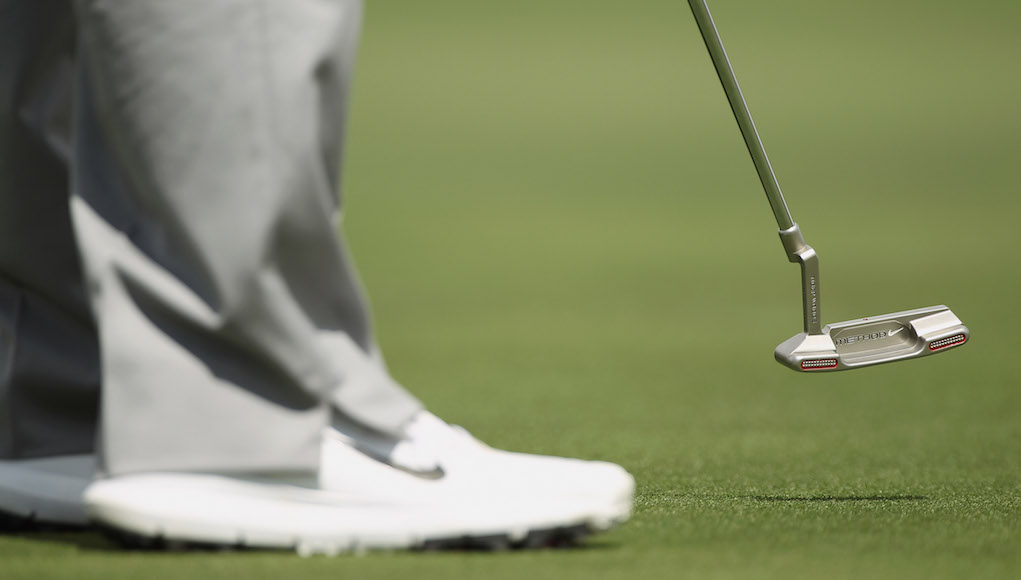
In a conventional golf swing, the clubface opens and closes, rotating to the target line. But with the putter, this is often seen as undesirable. In this article I’ll examine how clubface rotation happens, whether it should, and if so, to what extent.
Pendulum-style
Many people discount that the putter can be swung like a pendulum because the club does not lie vertical at the start. But if you lean a grandfather clock back 20 degrees or so from vertical, does not the pendulum still swing? The requisite feature is not that the pendulum swings vertically, but that it swings in-plane along a theoretical flat surface.
Here are just a few examples to support why an in-plane swing is worth pursuing:
- You can lay a STRAIGHT line on the flat surface of a plane, but not on a CURVED surface.
- Inertial forces act to pull the clubhead in-line with the path of the hands, and thus to form a plane for the swing.
- The best putters in the world swing the WHOLE putter in-plane, or very nearly so (regardless of what some may THINK that they do).
If a club is to swing within a single plane, it must begin the swing within that plane, the address plane, formed between the ball-to-target line and the club. The standard lie angle of a putter is typically 70 degrees, for which the address plane is inclined 20 degrees from vertical (90-20=70). The geometry of a swing within an inclined plane dictates that as the club rotates around the golfer, the clubhead travels up and away from the target line, toward the golfer’s side, on both sides of the lowest point of the arc. As this happens, the clubface will open and close to the target line, even when the clubface remains square to the flat surface of the plane. Additionally, the clubface may roll (rotating upon itself), opening and closing not only to the target line but also to the plane. Example: the Earth rotates around the Sun, and also rolls upon itself.
Modeling the swing
The putting model, “Iron Archie,” can swing a putter pendulum-style with clubface continually square to the in-plane arc when its “shoulders” are set to rotate parallel to the address plane. The only moving part of this simple machine is the entire shoulder/arm/club assembly around a central axis/hub.
Iron Archie in action
The human golfer CAN reproduce the single-action swing of Iron Archie simply by rotating the shoulders, or more accurately, the upper torso, parallel to the address plane.
A difference from the model
The most natural rotation of the shoulders is perpendicular to the spine, specifically a section of the thoracic spine just below the shoulders. This square rotation of shoulders-to-spine allows the whole spine, including the head, to remain fixed. This is why players who “rock the shoulders” on a steeper tilt may be observed with the head teetering back and forth. From an orthodox golf posture, the spine is not normally inclined to the degree that is perpendicular to the address plane. In this scenario (assumed throughout the article), if the golfer’s only movement were to rotate the shoulders naturally perpendicular to the spine, the club would move under and out of the address plane on both sides of the lowest point, the club carving a cone shape through space. In this scenario, a second movement must be added to keep the club moving in-plane – a vertical swinging of the arms from the shoulder joints — and this reality is no different with any other club. This specific action causes the golfer’s arm/club/clubface assembly to roll.
Learning from the best
A fine example of this “rolling” action is seen in the technique of arguably the greatest performer with the putter of our time, Tiger Woods. Tiger swings the putter near perfectly in-plane while maintaining a notably steady head position, indicating that his shoulders rotate mostly perpendicular to the central axis/hub. But since that area of his spine is more vertical than perpendicular to the swing plane, the clubface rolls, as the arms must swing from the shoulder joints to keep the club swinging in-plane. Tiger has been measured by the SAM PuttLab system to exhibit in the impact zone (4 inches before and after impact) 10.2 degrees of clubface rotation relative to the target line, of which 8.5 degrees is clubface roll, relative to the path of the clubhead. This degree of roll, in particular, is notably higher than other Tour players tested. To be clear, the roll of the clubface results not from the wrists rotating about themselves, independently of the upper arms (pronation and supination), but from the roll of the whole shoulder/arm/club assembly around a vertical axis within the swing plane. Thus, this higher degree of face rotation does not represent an undesirable manipulation of the hands, which some might see it as. In fact, the only way for Tiger to maintain a square face-to-plane relationship, all else the same, would be to roll the wrists independently of the upper arms — counter-clockwise in the backswing, then clockwise in the forward swing. Clearly, that would be the manipulation, an unnecessary added movement. And many have wandered down that dark road, often leading to a case of the dreaded “yips.”
Tiger Woods’ athletic posture with the thoracic spine (red line) inclined short of 90 degrees to the club, which incidentally lies at roughly 68 degrees to horizontal.
Tiger’s forearms roll over the swing plane. This is the action that rolls the clubface. In contrast, Iron Archie’s “forearms” remain parallel to the plane, allowing the clubface to remain perpendicular.
Seeing the light
The club, as it swings in-plane, will continually point to a straight line on the ground – a line within the plane – a “plane line.” Laser pointers can effectively be used to confirm an in-plane swing.
Practicing an in-plane swing. First, swinging the dominant arm with a laser pointer in-hand, then with the SmartStick training aid. The laser continually points straight to the white target line. Finally, flying solo.
A laser line-generator, like the LaserPutt training aid, can confirm an in-plane swing and also shed light on clubface roll. When the laser line remains on the target line:
- The swing is in-plane to the target.
- The clubface is maintaining a square relationship to that plane.
We saw both of those conditions achieved with Iron Archie in the first video in this article.
Comparing two in-plane swings with the LaserPutt. On the left is an Iron Archie-style “shoulder” swing; the right forearm remains in-plane while the clubface remains square to the plane. On the right is a Tiger Woods-style “arm” swing; the right forearm rotates out of plane slightly while the clubface rolls, evidenced by the laser line rotating off the target line. Even in this case, the LaserPutt provides valuable visual feedback as to whether you are returning the face squarely to impact. The PerfectStroke training aid serves as a suspended “plane line.”
The straight dope
Turning the spotlight to the so-called “straight-back-straight-through” style, in which the clubhead is supposedly to remain directly ABOVE the target line within a vertical plane, realize that when the club is inclined from vertical, this scenario would see the WHOLE club moving along a CURVED surface. I find the feel of this style notably less stable, less natural and less repeatable than the in-plane style. Still, it CAN be done, BUT if you’re hoping to power this style with a “shoulder” swing, know that your shoulders will need to rotate within a VERTICAL plane. This is unnatural at best, UNLESS you can incline your spine to parallel to the ground, but this is quite unnatural also.
Perhaps there was more method than madness to Michelle Wie’s adoption of this posture? Yet even she does not maintain the clubhead entirely within a vertical plane.
Proponents of the straight-back-straight-through style usually suggest also that the clubface should remain square to the target line. Again, to achieve this, either the shoulders must rotate within a vertical plane, or if not, then the golfer must actively roll the wrists about themselves to counter the roll resulting from the vertical arm swing required to maintain the clubhead within the vertical target plane. Frankly, either effort is an aberration. Further, I am not aware of a single player on any major professional tour who swings the putter head entirely within the vertical target plane. This style is mostly a myth. It makes some sense in theory, just not in practice.
Straight vs. curved
Have a look at the following two swings. Which looks straight and which looks curved/arced to you?
It’s a bit of a trick question, as both swings are in-plane. The swing on the right is viewed from within the vertical target plane, while the swing on the left is viewed from within the inclined address plane.
Swing like Archie or Tiger?
Both the style of Iron Archie and Tiger Woods produce the in-plane, pendulum-style swing. The main difference is in the relationship of the incline angles for the shoulder turn and the swing plane. The “flatter” or closer to horizontal the shoulder turn is from the swing plane, the more the clubface will roll, adding to the total face rotation. Many have concluded that less clubface rotation MUST automatically be “better,” less likely to be mis-timed, but consider these three points:
- The additional clubface rotation results simply from the arms swinging the club in-plane while maintaining a fixed spine. The squaring of the face-to-plane for impact in the forward swing is achieved solely by reversing that single action, and not on timing any additional active action to that action.
- A steady head position has always been deemed orthodox, especially when putting.
- In the full swing, a so-called “square” position at the top of the back-swing is reached when the clubface rolls, building up to 90 degrees to the swing plane along the path of the clubhead.
Of course, the golfer may use a degree of shoulder tilt somewhere between parallel to the address plane and perpendicular to the spine. The arms are then required to swing from the shoulder sockets, more than Iron Archie (zero) but less than Tiger, producing less face rotation than Tiger but more than Iron Archie (zero). But since the degree to which the shoulders tilt affects the face-to-path alignment, as we have seen, variance in that angle during the swing can directly cause clubface misalignment at impact.
Anything Else?
For the in-plane, pendulum-style swing with the putter, since the clubhead path parallels the plane direction ONLY at the lowest point of the arc, in-line with the thoracic spine, this is where the back of the ball should be positioned. The elbow and wrist joints should be immobile also, maintaining the one-piece structure of a single pendulum, unlike the double-pendulum action used with other clubs.
Conclusion
Those interested in exploring the in-plane, pendulum-style swing with the putter will find the training aids highlighted in this article to provide essential feedback. When guided on an in-plane swing, golfers consistently discover a feeling that they intuitively sense to be most appropriate. Perhaps that’s because an in-plane swing is the accepted ideal with any other club — in the area approaching impact at the very least.
Your sense of touch may guide you, as the stable feel of the hands and clubhead swinging in-line with each other contrasts to the wobbly feel of motion out-of-plane. Your sense of direction may guide you also, since although the clubhead is constantly changing direction as it circles within the plane, the plane ITSELF has direction with the target.
Conflict arises from beliefs that make sense in theory but not in practice, such as the belief that the clubhead should move in-line with the target for an extended length rather than in-line with the hands. And although an in-plane swing FEELS right, it may not initially LOOK right to you. You must not be alarmed when you see the path of the clubhead progressing inside the target plane and the clubface opening to the target line as the clubhead swings up the straight, inclined address plane. As an old Jedi Master once said, “May the force be with you.”
Instruction
The Wedge Guy: Beating the yips into submission

There may be no more painful affliction in golf than the “yips” – those uncontrollable and maddening little nervous twitches that prevent you from making a decent stroke on short putts. If you’ve never had them, consider yourself very fortunate (or possibly just very young). But I can assure you that when your most treacherous and feared golf shot is not the 195 yard approach over water with a quartering headwind…not the extra tight fairway with water left and sand right…not the soft bunker shot to a downhill pin with water on the other side…No, when your most feared shot is the remaining 2- 4-foot putt after hitting a great approach, recovery or lag putt, it makes the game almost painful.
And I’ve been fighting the yips (again) for a while now. It’s a recurring nightmare that has haunted me most of my adult life. I even had the yips when I was in my 20s, but I’ve beat them into submission off and on most of my adult life. But just recently, that nasty virus came to life once again. My lag putting has been very good, but when I get over one of those “you should make this” length putts, the entire nervous system seems to go haywire. I make great practice strokes, and then the most pitiful short-stroke or jab at the ball you can imagine. Sheesh.
But I’m a traditionalist, and do not look toward the long putter, belly putter, cross-hand, claw or other variation as the solution. My approach is to beat those damn yips into submission some other way. Here’s what I’m doing that is working pretty well, and I offer it to all of you who might have a similar affliction on the greens.
When you are over a short putt, forget the practice strokes…you want your natural eye-hand coordination to be unhindered by mechanics. Address your putt and take a good look at the hole, and back to the putter to ensure good alignment. Lighten your right hand grip on the putter and make sure that only the fingertips are in contact with the grip, to prevent you from getting to tight.
Then, take a long, long look at the hole to fill your entire mind and senses with the target. When you bring your head/eyes back to the ball, try to make a smooth, immediate move right into your backstroke — not even a second pause — and then let your hands and putter track right back together right back to where you were looking — the HOLE! Seeing the putter make contact with the ball, preferably even the forward edge of the ball – the side near the hole.
For me, this is working, but I am asking all of you to chime in with your own “home remedies” for the most aggravating and senseless of all golf maladies. It never hurts to have more to fall back on!
Instruction
Looking for a good golf instructor? Use this checklist

Over the last couple of decades, golf has become much more science-based. We measure swing speed, smash factor, angle of attack, strokes gained, and many other metrics that can really help golfers improve. But I often wonder if the advancement of golf’s “hard” sciences comes at the expense of the “soft” sciences.
Take, for example, golf instruction. Good golf instruction requires understanding swing mechanics and ball flight. But let’s take that as a given for PGA instructors. The other factors that make an instructor effective can be evaluated by social science, rather than launch monitors.
If you are a recreational golfer looking for a golf instructor, here are my top three points to consider.
1. Cultural mindset
What is “cultural mindset? To social scientists, it means whether a culture of genius or a culture of learning exists. In a golf instruction context, that may mean whether the teacher communicates a message that golf ability is something innate (you either have it or you don’t), or whether golf ability is something that can be learned. You want the latter!
It may sound obvious to suggest that you find a golf instructor who thinks you can improve, but my research suggests that it isn’t a given. In a large sample study of golf instructors, I found that when it came to recreational golfers, there was a wide range of belief systems. Some instructors strongly believed recreational golfers could improve through lessons. while others strongly believed they could not. And those beliefs manifested in the instructor’s feedback given to a student and the culture created for players.
2. Coping and self-modeling can beat role-modeling
Swing analysis technology is often preloaded with swings of PGA and LPGA Tour players. The swings of elite players are intended to be used for comparative purposes with golfers taking lessons. What social science tells us is that for novice and non-expert golfers, comparing swings to tour professionals can have the opposite effect of that intended. If you fit into the novice or non-expert category of golfer, you will learn more and be more motivated to change if you see yourself making a ‘better’ swing (self-modeling) or seeing your swing compared to a similar other (a coping model). Stay away from instructors who want to compare your swing with that of a tour player.
3. Learning theory basics
It is not a sexy selling point, but learning is a process, and that process is incremental – particularly for recreational adult players. Social science helps us understand this element of golf instruction. A good instructor will take learning slowly. He or she will give you just about enough information that challenges you, but is still manageable. The artful instructor will take time to decide what that one or two learning points are before jumping in to make full-scale swing changes. If the instructor moves too fast, you will probably leave the lesson with an arm’s length of swing thoughts and not really know which to focus on.
As an instructor, I develop a priority list of changes I want to make in a player’s technique. We then patiently and gradually work through that list. Beware of instructors who give you more than you can chew.
So if you are in the market for golf instruction, I encourage you to look beyond the X’s and O’s to find the right match!
Instruction
What Lottie Woad’s stunning debut win teaches every golfer

Most pros take months, even years, to win their first tournament. Lottie Woad needed exactly four days.
The 21-year-old from Surrey shot 21-under 267 at Dundonald Links to win the ISPS Handa Women’s Scottish Open by three shots — in her very first event as a professional. She’s only the third player in LPGA history to accomplish this feat, joining Rose Zhang (2023) and Beverly Hanson (1951).
But here’s what caught my attention as a coach: Woad didn’t win through miraculous putting or bombing 300-yard drives. She won through relentless precision and unshakeable composure. After watching her performance unfold, I’m convinced every golfer — from weekend warriors to scratch players — can steal pages from her playbook.
Precision Beats Power (And It’s Not Even Close)
Forget the driving contests. Woad proved that finding greens matters more than finding distance.
What Woad did:
• Hit it straight, hit it solid, give yourself chances
• Aimed for the fat parts of greens instead of chasing pins
• Let her putting do the talking after hitting safe targets
• As she said, “Everyone was chasing me today, and managed to maintain the lead and played really nicely down the stretch and hit a lot of good shots”
Why most golfers mess this up:
• They see a pin tucked behind a bunker and grab one more club to “go right at it”
• Distance becomes more important than accuracy
• They try to be heroic instead of smart
ACTION ITEM: For your next 10 rounds, aim for the center of every green regardless of pin position. Track your greens in regulation and watch your scores drop before your swing changes.
The Putter That Stayed Cool Under Fire
Woad started the final round two shots clear and immediately applied pressure with birdies at the 2nd and 3rd holes. When South Korea’s Hyo Joo Kim mounted a charge and reached 20-under with a birdie at the 14th, Woad didn’t panic.
How she responded to pressure:
• Fired back with consecutive birdies at the 13th and 14th
• Watched Kim stumble with back-to-back bogeys
• Capped it with her fifth birdie of the day at the par-5 18th
• Stayed patient when others pressed, pressed when others cracked
What amateurs do wrong:
• Get conservative when they should be aggressive
• Try to force magic when steady play would win
• Panic when someone else makes a move
ACTION ITEM: Practice your 3-6 foot putts for 15 minutes after every range session. Woad’s putting wasn’t spectacular—it was reliable. Make the putts you should make.
Course Management 101: Play Your Game, Not the Course’s Game
Woad admitted she couldn’t see many scoreboards during the final round, but it didn’t matter. She stuck to her game plan regardless of what others were doing.
Her mental approach:
• Focused on her process, not the competition
• Drew on past pressure situations (Augusta National Women’s Amateur win)
• As she said, “That was the biggest tournament I played in at the time and was kind of my big win. So definitely felt the pressure of it more there, and I felt like all those experiences helped me with this”
Her physical execution:
• 270-yard drives (nothing flashy)
• Methodical iron play
• Steady putting
• Everything effective, nothing spectacular
ACTION ITEM: Create a yardage book for your home course. Know your distances to every pin, every hazard, every landing area. Stick to your plan no matter what your playing partners are doing.
Mental Toughness Isn’t Born, It’s Built
The most impressive part of Woad’s win? She genuinely didn’t expect it: “I definitely wasn’t expecting to win my first event as a pro, but I knew I was playing well, and I was hoping to contend.”
Her winning mindset:
• Didn’t put winning pressure on herself
• Focused on playing well and contending
• Made winning a byproduct of a good process
• Built confidence through recent experiences:
- Won the Women’s Irish Open as an amateur
- Missed a playoff by one shot at the Evian Championship
- Each experience prepared her for the next
What this means for you:
• Stop trying to shoot career rounds every time you tee up
• Focus on executing your pre-shot routine
• Commit to every shot
• Stay present in the moment
ACTION ITEM: Before each round, set process goals instead of score goals. Example: “I will take three practice swings before every shot” or “I will pick a specific target for every shot.” Let your score be the result, not the focus.
The Real Lesson
Woad collected $300,000 for her first professional victory, but the real prize was proving that fundamentals still work at golf’s highest level. She didn’t reinvent the game — she simply executed the basics better than everyone else that week.
The fundamentals that won:
• Hit more fairways
• Find more greens
• Make the putts you should make
• Stay patient under pressure
That’s something every golfer can do, regardless of handicap. Lottie Woad just showed us it’s still the winning formula.
FINAL ACTION ITEM: Pick one of the four action items above and commit to it for the next month. Master one fundamental before moving to the next. That’s how champions are built.
PGA Professional Brendon Elliott is an award-winning coach and golf writer. You can check out his writing work and learn more about him by visiting BEAGOLFER.golf and OneMoreRollGolf.com. Also, check out “The Starter” on RG.org each Monday.
Editor’s note: Brendon shares his nearly 30 years of experience in the game with GolfWRX readers through his ongoing tip series. He looks forward to providing valuable insights and advice to help golfers improve their game. Stay tuned for more Tips!





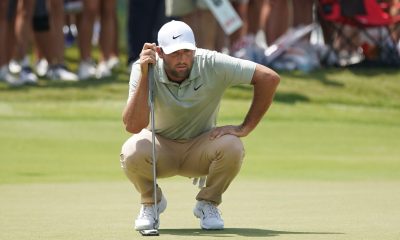

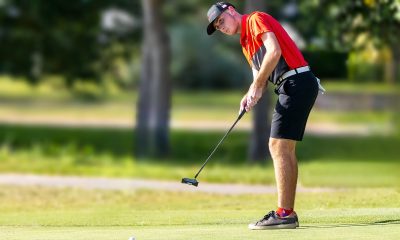



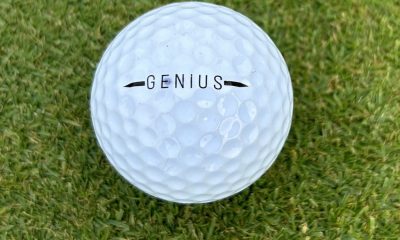



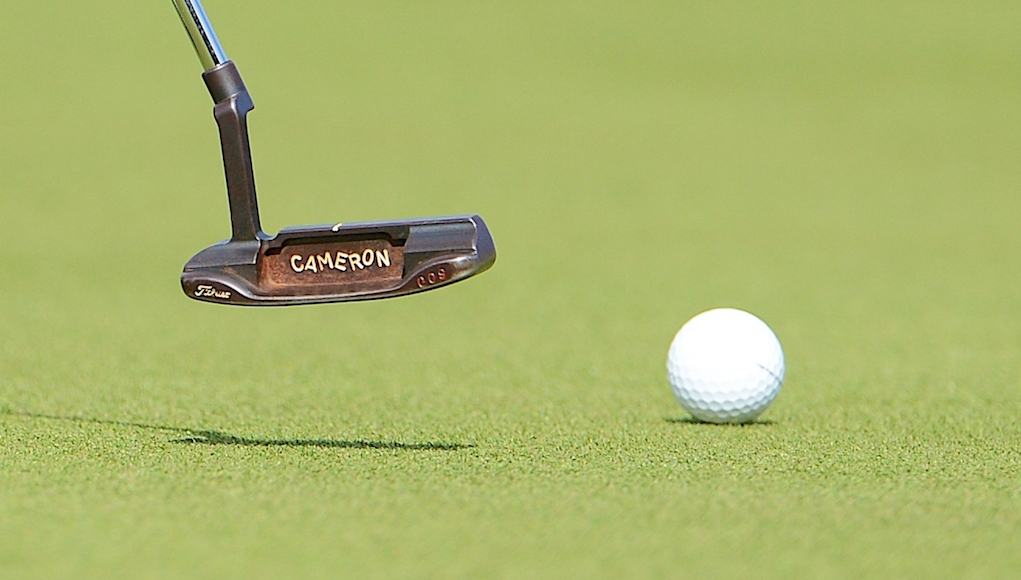








Josh
Dec 16, 2018 at 1:44 am
Is there are type of toe-hang that assists the putter face staying on plane (with less/no rotation as it pertains to hitting the ball)? Face balanced, etc.? Thanks
Cumby Long
Oct 21, 2016 at 12:23 pm
i’d trust this article more if i heard of the writer before
Todd Dugan
Oct 21, 2016 at 2:46 pm
I never “trusted” anything I heard from a golf instructor. I study and test everything to my own satisfaction. I encourage others to do the same and discover that the information presented in this article is true.
Dill Pickleson
Oct 17, 2016 at 9:54 pm
This is fantastic stuff. The ‘feel players’ will hate it and say they don’t need it but they don’t know how truly great consistent putters they can be. Once you get this right, then feel comes. There are no penalties in putting so people only judge themselves on made or missed “makeables” and enjoying occasional hot streaks. How about being hot every day you play and being white hot on some days….now you’re talking. Keep up the good work.
Todd Dugan
Oct 20, 2016 at 4:24 pm
Thanks, Dill. You’ve got it. Once you get you stroke on-plane, you roll out of bed putting great. Its no different in the full swing really.
kevin
Oct 6, 2016 at 2:40 pm
would you recommend using that raised putting rod that keeps the putter on plane for longer putts too? or does it work better for short putts? thanks for the help
Todd Dugan
Oct 6, 2016 at 4:32 pm
Kevin, the rod can be used to guide an in-plane swing with any club, up to the length of the rod. You can use the PerfectStroke aid for longer putts, the longest depending on the tempo of your swing. You raise a good point; the rod could be longer. I saw a video on YouTube where a long rod was suspended with a chair at both ends. You might try that.
kevin
Oct 7, 2016 at 3:11 pm
thanks for the reply. built one yesterday and seeing way better face rotation numbers based on my blast sensor!
Bill Presse
Oct 5, 2016 at 11:45 am
This article is dead nuts on point. A putter that is Lie Angle Balanced (Directed Force Putters) is balanced to remain square to each individual’s arc. ‘May the force be with you’????
Mr. Wedge
Oct 5, 2016 at 11:33 am
Albeit putting can be broken down into science, I always feel that putting is more of an art. Go with what feels natural and if you can read greens you will be a decent putter.
Todd Dugan
Oct 13, 2016 at 12:27 am
Mr. Wedge, with great technique, you can be far beyond a “decent” putter. But historically, nobody’s ever had much idea on what good putting technique actually is. In over 20 years as a pro, the best putters I’ve ever seen swing in-plane or nearly so. I’ve always been a good putter, but since developing an in-plane swing, I have become much better.
Bob Jones
Oct 5, 2016 at 10:10 am
Horton Smith, the best putter of his era, rotated his hands counter-clockwise to keep the putter going exactly straight back and straight through. This is really hard to do and get it right, but he made it work. Billy Casper hooded the putter on shorter putts, too.
Just for the record, astronomers say one body revolves around another (Earth-Sun, Moon-Earth) and bodies rotate on their own axis.
TheCityGame
Oct 5, 2016 at 9:49 am
Maybe it’s me, but there are no videos. There are just lines that say, in bold, “INSERT VIDEO”.
Zak Kozuchowski
Oct 5, 2016 at 10:26 am
Sorry about that, TheCityGame. We’ve fixed the issue.